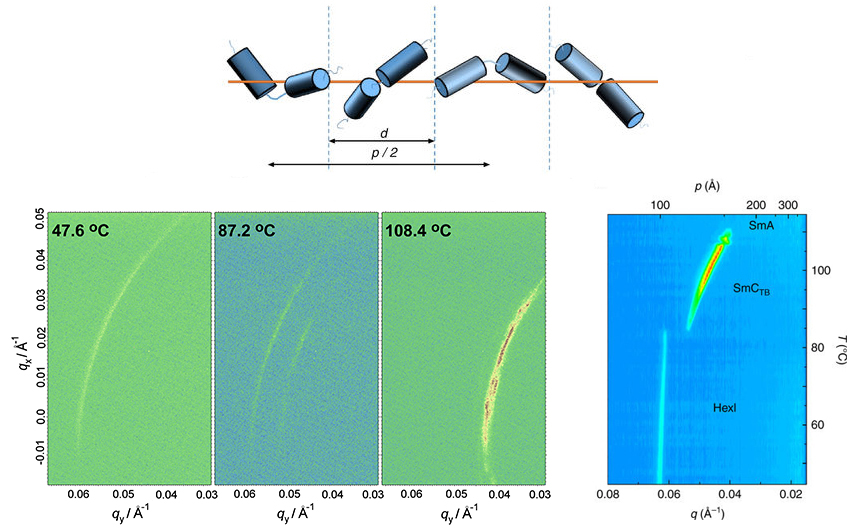The spontaneous formation of chiral (left- or right-handed) structures from effectively achiral molecules is at the heart of intense worldwide research. In particular, the phenomenon is thought to play a central role in the origin of biological homochirality—how certain molecules essential to life (e.g. amino acids or sugars) ended up displaying one type of chirality, even though there appears to be no chemical preference for the formation of one type over the other.
Twisted structures made from chiral building blocks are relatively common in nature, but examples of achiral molecules that assemble into helical aggregates are not. Recently, such a phenomenon was found in a liquid crystalline nematic phase (where identical molecules align their long axes but are otherwise free to move). Although built of achiral molecules, the phase exhibited structural chirality—the average molecular direction follows a short-pitch helix.
In this work, researchers studied a series of achiral asymmetric molecules consisting of two subunits attached by a spacer having an odd number of atoms (CB6OIBeOn, where n represents the number of carbon atoms in the terminal alkyl chain). These molecules form twisted structures in the nematic phase as well as in the smectic phase (the molecules are free to move only within a layer). The tight-pitch heliconical structure of the nematic (NTB) and tilted smectic C (SmCTB) phases was identified by resonant soft x-ray scattering (RSoXS) studies at ALS Beamline 11.0.1.2, performed with x-rays tuned to carbon absorption edge. The extremely strong tendency to form twisted structures was also expressed through the formation of mesoscopic helical filaments in the lowest-temperature smectic phase, the HexI phase.

J.P. Abberley, R. Killah, R. Walker, J.M.D. Storey, C.T. Imrie, M. Salamonczyk, C. Zhu, E. Gorecka, and D. Pociecha, “Heliconical smectic phases formed by achiral molecules,” Nat. Commun. 9, 228 (2018), doi:10.1038/s41467-017-02626-6.